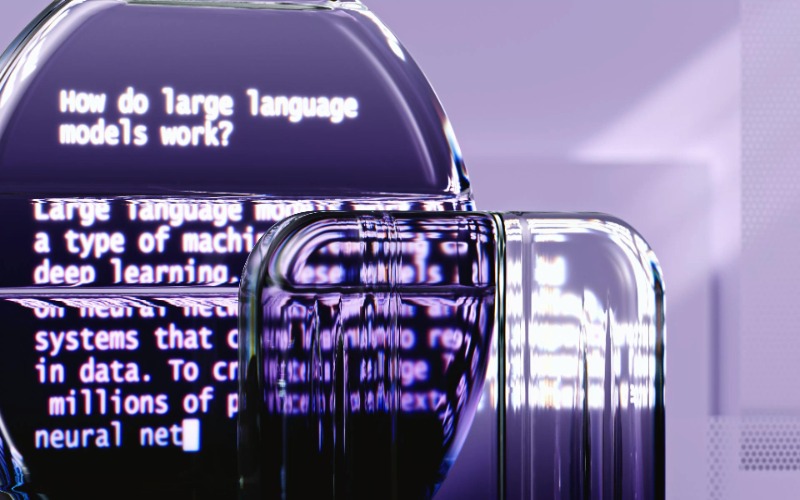Large Language Models (LLMs) represent a revolutionary step in the field of artificial intelligence, particularly in understanding and generating human-like text. These models, trained on extensive datasets, can perform a wide array of language tasks, making them invaluable tools in modern technology. From automating customer service interactions to generating creative content, LLMs are changing how we interact with machines, offering more natural and intuitive user experiences.
The application of LLMs extends across various industries, underscoring their versatility and growing importance. In sectors like healthcare, finance, and education, LLMs are for tasks like data analysis, personalized communication, and even developing educational tools. This widespread adoption highlights the need for professionals, particularly cloud architects and DevOps experts, to understand and effectively implement these models in their respective domains.
This article aims to serve as a comprehensive guide, providing insights into the selection, deployment, and management of LLMs. By delving into various aspects, such as choosing the right model, prompt engineering, and ethical considerations, it equips professionals with the knowledge to harness the full potential of these powerful tools.
Choosing the Right LLM Model
Choosing the right Large Language Model is a critical decision that can significantly impact the effectiveness of its application. Various factors, such as model size, language support, customization capabilities, and computational requirements play a vital role in this selection process. The model size, for instance, determines its processing power and the complexity of tasks it can handle, while language support is crucial for applications targeting specific linguistic demographics.
The process of selecting the most suitable model involves a thorough comparison of available options. Professionals must evaluate models based on their specific requirements, comparing features such as accuracy, processing speed, and the ability to handle specific language tasks. This evaluation often includes testing various models with real-world scenarios to gauge their performance and suitability for the intended application. Such comparative analysis ensures that the chosen model aligns well with the organizational needs and objectives.
In the realm of LLMs, several notable models stand out. OpenAI’s GPT series, for example, offers a range of models from GPT-2 to GPT-4, each with increasing sophistication and capabilities suitable for various applications. Google’s BERT and T5 models are renowned for their effectiveness in understanding the context and semantics of texts. Similarly, IBM’s Watson provides enterprise-level solutions, demonstrating its versatility in diverse fields. These models represent the forefront of LLM technology, offering powerful tools for professionals seeking to leverage AI in their operations.
Prompt Engineering for Maximum Efficiency
Prompt engineering is a pivotal aspect of working with Large Language Models (LLMs), where the way a prompt is structured can significantly influence the model’s output. It involves crafting inputs that guide the model to generate the most accurate and relevant responses. This process is more art than science, requiring an understanding of the model’s capabilities and limitations. Effective prompt engineering can drastically improve the efficiency of an LLM, reducing the need for additional processing and refining outputs.
Best practices in prompt engineering include being clear and specific in a prompt design, using relevant context, and iteratively refining prompts based on model responses. Successful examples of prompt engineering can be seen in applications like content creation, where tailored prompts lead to more coherent and contextually appropriate outputs. Another instance is in customer service chatbots, where well-engineered prompts enable the bot to understand and respond to complex customer queries accurately. These practices underscore the importance of skillful prompt design in maximizing the potential of LLMs.
In prompt engineering for Large Language Models (LLMs), several key techniques are employed to optimize outputs. These include using concise and clear language to reduce ambiguity, incorporating relevant contextual cues to aid model comprehension, and iterative refinement of prompts based on the model’s responses. Additionally, developing standardized prompt templates for frequent use cases can ensure consistent and efficient interactions. Employing negative prompting, where specific undesired outputs are explicitly discouraged, also plays a crucial role. Together, these strategies enhance the accuracy and relevance of the model’s responses, crucial for effective application in various scenarios.
Embeddings Model and Vector Store Selection
Embedding models play a crucial role in the performance of Large Language Models (LLMs). They transform text into numerical vectors, enabling LLMs to understand and process language. These models capture the semantic relationships between words, phrases, or even entire documents, thereby facilitating a deeper comprehension of language nuances. Popular embedding models like Word2Vec, GloVe, and BERT provide various approaches to this task, each with its unique strengths in capturing linguistic features.
When selecting an embedding model, it’s important to consider factors such as the nature of the text data, the specific language tasks at hand, and the computational resources available. Models like Word2Vec and GloVe are excellent for general-purpose applications but may lack the context sensitivity of more advanced models like BERT. The choice also depends on the desired balance between accuracy and computational efficiency, as more complex models typically require greater resources.
Vector store solutions are essential for managing and retrieving these embeddings efficiently. Solutions like Elasticsearch and FAISS (Facebook AI Similarity Search) offer robust platforms for storing and searching through large volumes of vectors. Their integration into the LLM ecosystem is vital for applications that require real-time access to embeddings, such as recommendation systems or search engines. The choice of vector store should align with the scalability and performance needs of the application, ensuring that the full potential of the embedding model is harnessed.
Ensuring Security and Effective Deployment in LLM Applications
Securing data and user inputs is paramount in the deployment of Large Language Models (LLMs). With the increasing reliance on LLMs for processing sensitive information, implementing robust security measures is crucial. This includes encrypting data, managing access controls, and regularly auditing systems to prevent data breaches. Compliance with data protection regulations like GDPR and CCPA is also essential, ensuring user data is handled responsibly and ethically.
Deploying and monitoring LLM applications efficiently requires leveraging advanced technologies. For instance, using cloud platforms like AWS, Azure, or Google Cloud ensures scalable and secure environments for deployment. Tools like Kubernetes can aid in containerization and orchestration, facilitating easier scaling and management of LLM applications. For monitoring, technologies such as Prometheus for performance metrics and Grafana for data visualization are commonly used. These tools enable real-time tracking of usage, performance, and resource allocation, which are crucial for maintaining optimal operation and cost-efficiency of LLM applications. Together, these technologies form a robust framework for deploying and managing LLMs securely and effectively.
Navigating Ethical Challenges and Ensuring Accuracy in LLM Applications
The ethical use of Large Language Models (LLMs) necessitates a deep understanding of their societal impact. With LLMs shaping narratives and influencing decisions, it’s crucial to address biases and ensure fair representation. Innovative approaches, like OpenAI’s incorporation of ethical guardrails in GPT models, exemplify efforts to promote fairness and inclusivity.
Guidelines for responsible use are essential, emphasizing transparency and the avoidance of harmful biases, especially in applications that influence public opinion or decision-making.
Monitoring for model hallucination in LLMs is equally critical. Hallucinations – instances where models generate false or misleading information – pose significant challenges to reliability.
Techniques like anomaly detection algorithms and rigorous testing protocols are employed to identify and mitigate such issues. Balancing performance with accuracy involves a continuous refinement process, where models are regularly updated to enhance reliability without compromising efficiency. These measures ensure that LLMs remain not only powerful tools but also trustworthy and ethically sound in their application.
Embracing the Future of LLMs: A Path Forward for Cloud Architects and DevOps Professionals
In conclusion, the integration of Large Language Models (LLMs) into various facets of technology is not just about harnessing a powerful tool; it’s about steering this innovation responsibly and effectively. As cloud architects and DevOps professionals, the journey involves continuous learning and adaptation. The ever-evolving nature of LLMs demands a proactive approach to stay abreast of the latest developments, from advancements in model efficiency to emerging ethical frameworks.
The future of LLMs holds immense potential. With the ongoing research and development in areas like model robustness and ethical AI, we can anticipate more sophisticated and reliable models. This evolution will likely introduce new paradigms in data security, deployment strategies, and user interaction, presenting challenges and opportunities for professionals in this field. Embracing these changes and contributing to the responsible advancement of LLMs will be key to unlocking their full potential, ensuring they serve as beneficial tools for society and industry alike.










